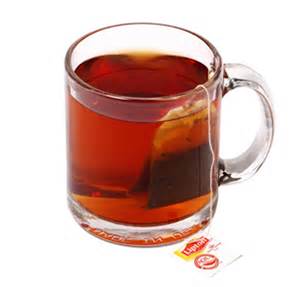 I’m really excited to write this blog, because I am an avid tea drinker, and I just returned from an extended vacation to three countries where tea is highly regarded. Additionally, I recently studied tea for its medicinal purposes as I was finishing my Complementary and Integrative Therapy program at Drexel University in December. Last month was National Tea Month.
I’m really excited to write this blog, because I am an avid tea drinker, and I just returned from an extended vacation to three countries where tea is highly regarded. Additionally, I recently studied tea for its medicinal purposes as I was finishing my Complementary and Integrative Therapy program at Drexel University in December. Last month was National Tea Month.
The use of tea as a beverage goes back more than 2500 years in China and is one of the most widely used beverages world-wide next to water. Most of the tea consumed in the US is in the form of iced tea. See more interesting sales and consumption facts about tea. Tea contains catechins, a type of antioxidant. This is seen in higher concentrations in green tea versus black tea.
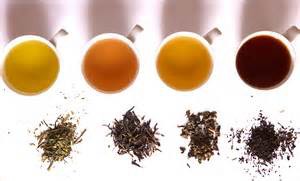 There are four types of tea: black, green, white, and oolong. Black tea involves the fermentation of the leaves before they are dried; green tea is just the dried leaves; white tea is the least processed type of tea and is picked at a very specific time of year; and oolong tea involves multiple levels of fermentation before it is dried.
There are four types of tea: black, green, white, and oolong. Black tea involves the fermentation of the leaves before they are dried; green tea is just the dried leaves; white tea is the least processed type of tea and is picked at a very specific time of year; and oolong tea involves multiple levels of fermentation before it is dried.
So, onto the important part- why should we drink tea? In Phytotherapy, or the study of herbs used in medicinal forms, tea rich in catechins is used for reducing the risk of heart disease, decreasing serum lipid concentration, playing a role in weight reduction, digestive aids (specifically peppermint tea), a stimulant (black and green teas), and reducing the risk of certain types of cancers.
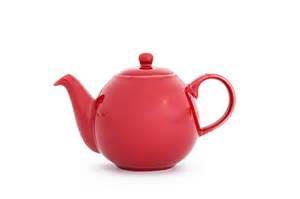 An interesting fact about tea is that the longer you let it brew, the less caffeine it contains; however, the extended time increases the catechins in the tea. If you are drinking tea for the caffeine, brew black tea for 2-5 minutes and green tea for 3-5 minutes. If you are consuming it for medicinal purposes, brew black tea for 10 minutes and green tea for a minimum of 10 minutes, but no longer than 20.
An interesting fact about tea is that the longer you let it brew, the less caffeine it contains; however, the extended time increases the catechins in the tea. If you are drinking tea for the caffeine, brew black tea for 2-5 minutes and green tea for 3-5 minutes. If you are consuming it for medicinal purposes, brew black tea for 10 minutes and green tea for a minimum of 10 minutes, but no longer than 20.
I must mention a few contraindications with drinking tea. If you have a weakened cardiovascular system, renal disease, and thyroid hyperfunction, you should use tea with caution. There are no issues with consuming tea while pregnant or lactating as long as the caffeine count is less than 5 cups, or 300 mg, per day.
Earlier I mentioned that I was recently on vacation, so I thought I would share with you some fun facts that I learned about tea in England, Ireland, and Israel.
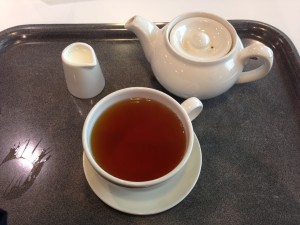 In England, it is custom to have Afternoon Tea, in addition to tea with any meal. This involves black tea with milk accompanied by small sandwiches, a couple of cookies, and/or possible a pastry. Milk is always provided with tea, regardless of if you ask for it. They do ask if you want a sweetener.
In England, it is custom to have Afternoon Tea, in addition to tea with any meal. This involves black tea with milk accompanied by small sandwiches, a couple of cookies, and/or possible a pastry. Milk is always provided with tea, regardless of if you ask for it. They do ask if you want a sweetener.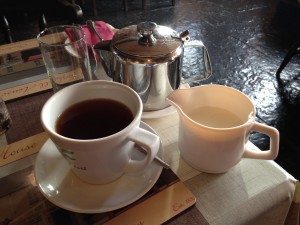 In Ireland, tea or coffee is consumed at any meal. A strong Irish black tea is used, and milk/cream is served. They also ask if you would like a sweetener. I received several strange looks when I told servers I wanted neither, since I enjoy the flavor of tea.
In Ireland, tea or coffee is consumed at any meal. A strong Irish black tea is used, and milk/cream is served. They also ask if you would like a sweetener. I received several strange looks when I told servers I wanted neither, since I enjoy the flavor of tea.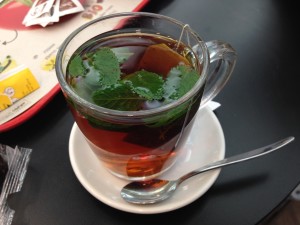 In Israel, a black tea is served usually with peppermint (pronounced phonetically “non” in Hebrew). They ask if you would like cream or sweetener, but neither is automatically given.
In Israel, a black tea is served usually with peppermint (pronounced phonetically “non” in Hebrew). They ask if you would like cream or sweetener, but neither is automatically given.
For some more information on tea. See my previous blog, “Beat the Summer Heat” for a great iced tea recipe. I thought this was an interesting article to share on the health benefits of tea. I also liked this book, The ABC Clinical Guide to Herbs, by Mark Blumenthal (2003) which discusses tea.
There are actually a number of health benefits to drinking tea. So, please, pass me a cup of tea.